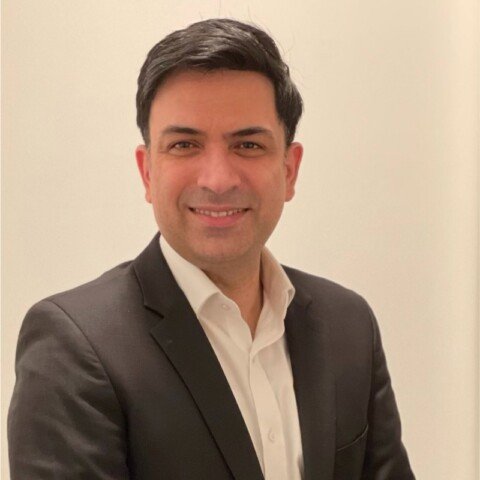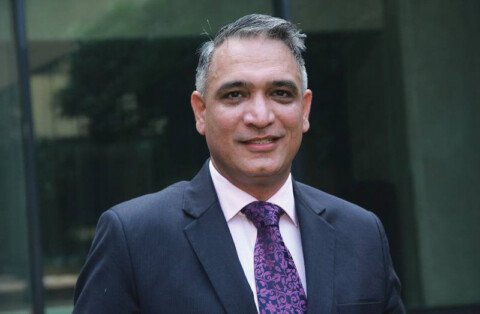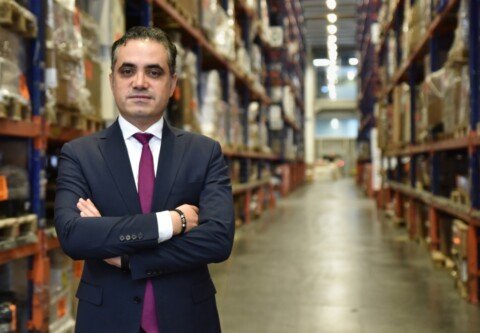CCI Logistics & Industrial Parks is the infrastructure vertical of Fateh India Group, the transportation and logistics Conglomerate that is involved in end-to-end supply chain services and also comprises of CCI Logistics (transportation and distribution) and Avvashya CCI Logistics (international freight forwarding/customs clearance/contract logistics). The combined experience and rich expertise of the group’s subsidiaries that cover a range of sectors, gives CCI Logistics & Industrial Parks an enormous edge over other developers as they have a wide range of customers, helping them understand the various aspects of arranging warehouses for optimal functionality. In an exclusive interaction, Naresh Sharma, Director of the group informs Upamanyu Borah, how CCI is tapping into the ‘asset class of choice’ for the past several years, on the back of strong inherent demand, and delivering world-class, user-friendly Grade A+ quality spaces in key domestic consumption markets.
What is the outlook of the logistics and industrial park segment – immediate, mid and long-term?
We are bullish about the future of the sector. The COVID-19 pandemic has taken a toll on real-estate market, and in my opinion, the warehousing market is the saviour for real-estate.
The logistics and industrial park segment is seeing good amount of traction from large occupiers. Today, people find it very convenient to order their needs online rather than going to physical stores. This drives large e-commerce companies to deliver their products the very next day or the same day, creating a demand for large warehousing spaces in many consumption markets.
In the post-COVID era, the world will be looking at India as the new supply chain hub. This also generates demand for large manufacturing companies to look out for spaces on a build-to-suit (BTS) model. Logistics and industrial parks gives manufacturing companies the huge advantage of time since everything is done by the developer and they do not have a burden of huge capital expenditure for buying lands, building the infrastructure, await government and regulatory approvals.
In a nutshell, both logistics and industrial requirements are seeing a huge uptick in demand.
How are the new age logistics and industrial parks different from previous versions?
Earlier, the concept of logistics & industrial parks did not exist. This trend only started about 8-10 years back when large developers like CCI Logistics & Industrial Parks started developing these kind of spaces and occupiers experienced an environment which is hygienic, safe to work in, 100% compliant in terms of all regulatory and industry standards, superior quality of the buildings– standardised Grade A infrastructure. Occupiers no longer need to face shut down or sealing notices from the authorities as these parks are 100% compliant in all aspects.
The infusion of large private equity funds motivated many developers to develop large spaces to effectively cater to market demands. Earlier, the size of developments was 10-15 acres, and today, developers look at 50 acres on minimum-scale.
BTS – are customers ready to pay a premium for customised solutions?
Augmented occupier demand along with improved quality of spaces has resulted in higher rental growth across cities. Rentals in certain locations have recorded a CAGR of up to 18-21%.
The BTS model is always good for the developer and occupier. The developer gets a good horizon on his returns and the occupier gets a good quality building as per specifications, which is always a win-win. However, a good quality building comes at a price as there is huge capital investments involved. The occupiers need to understand the economics behind the charges and should work accordingly with the developers.
How are you making your warehouses more eco-friendly?
Companies nowadays are very keen on sustainability and they want to be in an environment that implements good practices. Our parks comply with all the international and national standards in terms of sustainability. We keep multiple factors in mind when we design these parks. Solar power generation, use of LED lights that consume less energy, use of energy-efficient equipments, insulation of the warehouse boxes to save on utility expenses, maintenance of sewage treatment plants, and so on and so forth.
Green warehouses practices benefit the occupiers and the environment, earth-friendly choice with environmental benefits that extend well beyond the warehouse that uses them. Because Fateh India Group is into warehouse management– 3PL services, we are encouraged by environmentally conscious companies who look at reducing their emissions from solid waste disposal. This adds value to the occupier’s real-estate strategy.
Adequate space for greens is another factor. Our parks are designed in such a way that we have good ratio of green belts that comply to the environmental norms. This allows us to seize opportunities in the creation of long-term value of our assets.
What are the challenges facing the establishment of facilities?
The primary challenge in the logistics and industrial parks segment is the availability of clean title to lands. Getting a clear land in India is a huge task, and we have good legal teams in place to verify all the required documents and ensure that the land we buy has a clear title.
The second challenge is obtaining local government approvals. Unlike GST, the applicable sanction laws are different in every state in India. We ensure that we comply with all the norms of the various states.
Additionally, thanks to the central government and a few state governments, there is a single-window system for speeding up process of approvals for the industry, and investments proposals. If the approvals are not in place, the construction cannot start which adds on to the interest on the capital investment. Any delay in the approval process is a huge loss to the developers.
How is facility location determination a business critical strategic decision?
Location is the most important factor. At Fateh India Group, we provide end-to-end supply chain solutions. We are in constant touch with our valued customers on their demand requirements. This data helps us in zeroing on the location that best suits our valued customers as well as our investments. Availability of skilled/unskilled work force, proximity to consumption markets and major highways are a few factors we take into account concerning location planning. In the past, the focus concerning location was mostly for tier I cities like Delhi NCR, Mumbai, Chennai, Bengaluru, Hyderabad, and Kolkata. But today, we see a growing interest around it in tier II cities like Lucknow, Coimbatore, Nagpur, amongst others.
Delhi NCR, Mumbai, Bengaluru, Kolkata are areas exclusively for warehousing establishments while locations such as Chennai and Pune suit both logistics and industrial requirements.
How is the government’s response to organised warehousing? How are they facilitating infrastructure development?
Government initiatives like GST (one nation, one tax), relaxation of FDI policies in real-estate space, and ‘Smart Cities Mission’ has boosted the industrial real-estate — including plants, warehouses and distribution facilities. Renewed interest in ‘Make in India’ and ‘Invest India’ initiatives by the centre has also given a boost to the segment. These policies are attracting many foreign companies to set up their manufacturing units in India. While development of world class seaports and airports is helping the private players develop logistics competencies and expand service outreach.







